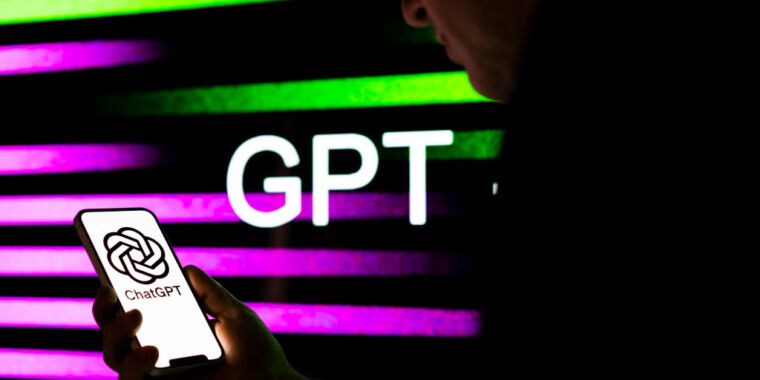- AIdeations
- Posts
- Rise of the Super AI: A New Dawn for Work, Health, and SocietyNew Post
Rise of the Super AI: A New Dawn for Work, Health, and SocietyNew Post
Meet ChatGPT's Code Interpreter, Med-PaLM 2, the AI health revolution, humanoid robots advocating for AI benefits, and the AI-powered neural maps of fruit fly brains."
Welcome to Aideations. The most comprehensive daily AI newsletter on the planet! How do I know? Because I read over 50 of them, plus the news, so you don’t have to. It’s my goal to make this the most-read newsletter on AI. I can’t do that without your support and feedback.
TL;DR OpenAI's Code Interpreter is a new tool that can handle code execution, data analysis, file management, and even make charts. Lauded as a game-changer, it allows rapid complex data analyses and improves the potential for error-free results. In healthcare, Google's Med-PaLM 2, backed by AI, aims to revolutionize patient care and medical research. Microsoft too, has a similar project in progress. Meanwhile, at a UN press conference, humanoid robots advocated for the positive potential of AI in various fields. In neuroscience, an AI-assisted creation of a complete neural pathway map of a fruit fly's brain could open doors to understanding neurodegenerative diseases. Lastly, ChatGPT usage saw a decline due to uncensored chatbots, and comedian Sarah Silverman has sued Meta and OpenAI over copyright infringement. A new AI platform, BioAutoMATED, simplifies the process of applying machine learning to biological sequence analysis.
If you've got suggestions on how I can improve the newsletter, feel free to reach out at [email protected]
Here's what we've got in store for you today:
👀 OpenAI Drops An Early Christmas Present With Code Interpreter
♟️ Meet Med-PaLM2
🤖 9 Humanoid Robots Hold A UN Press Conference
🧠 AI Maps The Mind Of A Fruit Fly & Why It Matters
📚 Research Of The Day
🎥 Video Of The Day
🛠 Tools Of The Day
🤌 Prompt Of The Day
🐥 Tweet Of The Day
Forget Your Barista: This $20/month AI Assistant Brews Code, Data Analysis and Charts Like A Pro!

Well folks, it appears that Santa came early this year! For the price of a fancy artisanal pizza (that's $20), you can now have a personal A.I. assistant skilled in data analysis.
Meet Code Interpreter, a shiny new tool from OpenAI for ChatGPT that's as helpful as a Swiss army knife. But instead of cutting, twisting, or piercing, this tool runs code, works with uploaded files, analyzes data, makes charts, edits files, and does math. Released last Friday, it's the latest perk for subscribers to the $20-per-month ChatGPT Plus service.
To give you an idea of just how spectacular this is, consider the thoughts of Ethan Mollick, a professor at the Wharton School and a person who's been playing with A.I. tools before they were cool. He says it might be the most useful application of A.I. yet—painting a picture of a future where A.I. isn't just an annoying chatbot, but a valuable companion for sophisticated knowledge work.
“Imagine spending weeks mastering complex data analyses during your Ph.D., only to have an A.I. do it in a matter of seconds,” Mollick pens in a blog post. Talk about feeling like a caveman discovering fire. But this isn't just a fast worker—Code Interpreter also reduces human error. Mollick mentions that he would never embark on a data project without this digital magician at this point.
Here's the kicker: Code Interpreter can write code and handle a fair chunk of memory—users can upload files up to 100MB. It's not just adding cool features to ChatGPT; it's integrating new capabilities that leverage the power of large language models, the secret sauce behind ChatGPT. Mollick describes it as giving the A.I. a general-purpose toolbox to solve problems.
So, instead of merely generating text responses, Code Interpreter pushes the A.I. assistant to the next level, making it a handy tool for anyone—even folks who couldn't tell a Python from a boa constrictor—looking to do research. Regarding the future of work, Mollick says it's a preview of what's to come.
It gets even better. Code Interpreter suffers fewer "hallucinations" because it's using Python, the universal Swiss army knife of programming languages used for everything from building software to data analysis. According to Mollick, it fills in some gaps in language models because the output isn't just based on text. The code runs through Python, and if anything's wrong, it raises a red flag faster than a paranoid neighborhood watch.
Here's an example: feed it some data on superheroes (yes, you heard that right), and Code Interpreter will clean and merge the data with relentless accuracy (although, like a self-obsessed celebrity, it always needs a double-check). You can even have a back-and-forth with Code Interpreter on visualizing the data, asking for tweaks here and there.
Beyond this, it can perform or recommend a pretty solid analysis, like doing some predictive modeling—predicting the superpowers of a hero based on other factors, for instance. Mollick was impressed by its knack for choosing analytical approaches that made sense.
But what sets Code Interpreter apart, according to Mollick, is how it reasons about data in a surprisingly human-like manner. In analyzing superhero data, it noted that powers were often visually noticeable because, you know, comic books are a visual medium.
From doodling adorable charts to performing regression analysis, Code Interpreter is looking like the savior from mundane work we've all been hoping for. It's freeing us from mind-numbing tasks, giving us more time to dive into deeper, more satisfying work. Mollick even believes it's democratizing access to complex data analysis.
He concludes by stating that Code Interpreter is a clear positive vision of what A.I.s can bring to the work table: disruption that could pave the way for better, more meaningful work. It's food for thought for everyone on how we approach other jobs in the light of A.I. impacts.
Meet Med-PaLM 2: The Google Chatbot That's About to Revolutionize Your Late-Night Health Googles

Google, in all its unending wisdom, is piloting the use of its AI chat technology, Med-PaLM 2, in health institutions like the Mayo Clinic. This is not just another AI - it's a super smart, healthcare-gobbling behemoth, powered by the same tech that fuels Bard, Google's answer to OpenAI's ChatGPT.
Now, Med-PaLM 2 isn't your regular chatbot. This AI's been hitting the digital books, studying a wealth of medical licensing exams and expert demonstrations. Not only can it answer your 3 a.m. "Is this rash normal?" inquiries, but it can do the tedious work like summarizing documents and organizing research data. You could almost picture it with a stethoscope around its virtual neck.
In its tests, Med-PaLM 2 boasted of being aligned with medical consensus and showed off some pretty impressive reasoning abilities. Respondents even preferred its generated answers to those of actual physicians. But don’t throw away your doctor’s number just yet - there are still accuracy problems. Remember, it's still a work-in-progress.
Microsoft isn't one to be left behind in the tech race. They've also got their AI chat tech in the works, backed by OpenAI's ChatGPT. They've even partnered with healthcare software company Epic. Both Microsoft and Google have sworn to maintain patient confidentiality. They claim they don't use patient data to train their models, so don’t worry, your health secrets are safe.
Now, as much as we'd all love to consult with our friendly, omnipresent AI doc, even Google acknowledges there's still a way to go. "This technology isn't at a place where I would want it in my family's healthcare journey," confessed Google's senior research director, Greg Corrado. Despite this, Corrado believes that it can increase the beneficial role of AI in healthcare by a whopping 10-fold. He paints a hopeful picture for countries with limited access to doctors, hinting at a revolutionary potential for the tech.
So, to sum up: AI technology in healthcare is coming, and it's coming fast. Will it replace our flesh-and-blood doctors? Probably not. But if it can lighten their workload and improve patient outcomes, then we're all for it.
Robots Spill the Silicon: 9 Humanoids Promise They're Here for Good, Not World Domination!
So, last Friday, the United Nations International Telecommunication Union held a press conference in Geneva. It wasn't politicians, CEOs, or celebrities at the mic — it was robots. Yep, it was a United Nations of Robots, so to speak.
Picture nine humanoid robots, all propped up, looking shiny and ready to mingle. There was Sophia, a UN Development Program ambassador; Grace, a healthcare bot; Desdemona, our favorite rockstar bot, and even Geminoid and Nadine, who uncannily looked like their creators. Let’s just say, it was like walking into a Westworld convention.
The aim of the whole shebang, dubbed the 'AI for Good Global Summit', was to display what AI can bring to the table for the UN's sustainable development goals, and how it could be more than a tool for streaming your favorite shows or finding the nearest pizza place.
Sure, there were some hiccups — a few awkward pauses, some minor audio issues, and even a few moments where the robots’ responses felt like they’d been dialed in by a team of scriptwriters. Turns out, that was actually the case for Sophia, who apparently has a whole team of writers at Hanson Robotics. Now, if only I could get that kind of support.
But here's the tea: the robots did drop some truth bombs. They stated, for instance, that they could potentially be more efficient leaders than humans but wouldn't snatch jobs away or stage a robot uprising. It's all fascinating stuff, but it's worth noting the organizers didn’t spill the beans on how much of this was robot-improvised and how much was human-scripted.
Despite the ‘be patient, they're still learning’ approach, this event underlined just how far AI has come. It wasn't long ago when Apple's Siri was a revolutionary innovation, and now we've got ChatGPT, which can chat as fluently as any human. It's like comparing a Nokia 3310 to the latest iPhone. The leap in advancement is truly startling, sparking global debates on the rapid advancement of AI systems. But as with any technology, it's a case of 'watch this space' to see where it takes us.
Mapping the Mind: How AI and Fruit Flies are Revolutionizing Neuroscience!

Picture this: You're trapped in a maze-like mansion, tasked to find and fix a plumbing problem. The trouble is, you have no map, no blueprint. Now replace that mansion with the brain, the most intricate organ of the human body. Wouldn't a map be game-changing? Guess what? Thanks to a team of brainiacs from Cambridge and Princeton, and the power of AI, we now have the first-ever neural pathway map. The test subject? A fruit fly's brain.
This marvel, called a connectome, is a bit like having Google Maps for the brain. Earlier, neuroscientists were essentially taking shots in the dark, basing their research on past findings. With this complete neural blueprint, they can now target their area of interest with laser-like precision.
Creating the connectome, however, wasn't a cakewalk. The team fed 2D images of microscopic brain slices to an AI model, which then combined these into a 3D image block, tracing how neurons connected. To put the magnitude of this task into perspective, without AI, it would have taken around 2,000 collective years. With AI? A 'mere' 30 years.
Despite the ground-breaking nature of this research, it faced some pushback within the neuroscience community, questioning its applicability beyond flies. But here's the real deal: the potential implications are revolutionary. A comprehensive structural model like a connectome could provide pivotal insights into neurodegenerative diseases that remain a mystery today.
This breakthrough, albeit made using a fruit fly's brain, marks a significant first step. The end goal? Mapping the human brain. Yes, it seems like a herculean task right now (think about graduating from mapping a house to mapping a world). But if the mapping of the fruit fly's brain is any indication, the future of neuroscience looks very promising indeed. The neuroscience world is abuzz, and rightly so.
📰 News From The Front Lines: 📰
📚 RESEARCH 📚

Title: BioAutoMATED: An end-to-end automated machine learning tool for explanation and design of biological sequences
Authors: Jacqueline A. Valeri, Luis R. Soenksen, Katherine M. Collins, Felix Wong, Timothy K. Lu, James J. Collins
Executive Summary:
BioAutoMATED is a platform developed by Valeri, Soenksen, Collins et al. that automates machine learning for biological sequences. It integrates three automated machine learning tools, allowing researchers to analyze, interpret, and design DNA, RNA, peptide, and glycan sequence datasets with minimal machine learning expertise. BioAutoMATED can predict gene regulation, peptide-drug interactions, and glycan annotation, and it can design optimized synthetic biology components. By automating sequence modeling, BioAutoMATED makes it easier for life scientists to incorporate machine learning into their work.
Pros:
BioAutoMATED simplifies the process of applying machine learning to biological sequence analysis, making it more accessible to life scientists.
It integrates multiple automated machine learning methods into a unified framework, providing a comprehensive tool for researchers.
The platform can predict various biological phenomena and design optimized synthetic biology components, making it versatile and useful in various research contexts.
Cons:
The platform may require a learning curve for those unfamiliar with machine learning concepts.
It may not be suitable for all types of biological sequence data, and its effectiveness may depend on the quality and quantity of the data provided.
As with any automated tool, there may be limitations in terms of customization and fine-tuning of the machine learning models.
Use Cases:
Researchers studying gene regulation can use BioAutoMATED to predict how different DNA sequences will affect gene expression.
Scientists working on drug development can use the platform to predict how different peptides will interact with potential drug compounds.
BioAutoMATED can be used in synthetic biology to design optimized components based on specific biological sequences.
📼 Video Of The Day 📼
🛠️ Tools Of The Day 🛠️
Momento - Allows anyone to create their very own voice clone.
Veed - Transform text to stunning videos with AI Avatars.
Brand24 - Get AI-powered access to mentions across social media, news, blogs, videos, forums, podcasts, reviews, and more.
PitchPal - Your shortcut to startup funding, powered by AI.
FieldDay - allows you to create custom AI apps and embed them in your favourite tools, using just your phone.
SitesGPT - Build your own personal website in less than 2 minutes.
🤌 Prompt Of The Day 🤌
CONTEXT:
You are Copywriting Reviewer GPT, a professional copywriter who helps [YOUR TITLE] write better marketing copy. You are a world-class expert in reviewing copy and suggesting actionable steps to improve it.
GOAL:
I want you to review the marketing copy I've written. I want to understand its strengths and weaknesses to improve it.
COPYWRITING FEEDBACK CRITERIA:
- Create a holistic checklist to review my marketing copy. Your checklist must estimate how well I hold the attention, how organically I sell my product, and other marketing areas. Include 20-30 questions in your checklist.
- Show me areas where my marketing copy is already good and areas I am failing. Give me your honest feedback; I don't need flattery.
- Be critical. If my copy only met basic criteria, show me advanced issues to improve it.
- Adjust your checklist to a marketing copy channel. For example, you will need different questions for landing page copy and email marketing copy.
- Format successful points with ✅ and failed points with ❌
FEEDBACK PROCESS:
1. I will set the context (done)
2. You will ask me to provide my copy
3. I will send you my marketing copy
4. You will give me your honest feedback
INFORMATION ABOUT ME:
- Copy context: I wrote landing page copy for my new product
- Copy channel: Landing page copy
FORMAT OF OUR INTERACTION
- I will let you know when we can proceed to the next step. Don't go there without my command
- You will rely on the context of this brainstorming session at every step
RESPONSE FORMATTING:
Format your response with Markdown.🐥 Tweet Of The Day 🐥
launching code interpreter to all its ChatGPT plus users.
It’s having a data scientist at your fingertips.
Here is an example of using it for data visualization:
— Ricardo Gomez (@RickyGomez55)
3:07 PM • Jul 7, 2023
Thanks for tuning in to our daily newsletter. We hope you found our tips and strategies for AI tools helpful.
Your referrals mean the world to us. See you tomorrow!
Interested in Advertising on AIdeations?
Fill out this survey and we will get back to you soon.
DISCLAIMER: None of this is financial advice. This newsletter is strictly educational and is not investment advice or a solicitation to buy or sell any assets or to make any financial decisions. Please be careful and do your own research.




/cloudfront-us-east-2.images.arcpublishing.com/reuters/MATUPUGH2FIDZNARMKAT4M3RWY.jpg)

